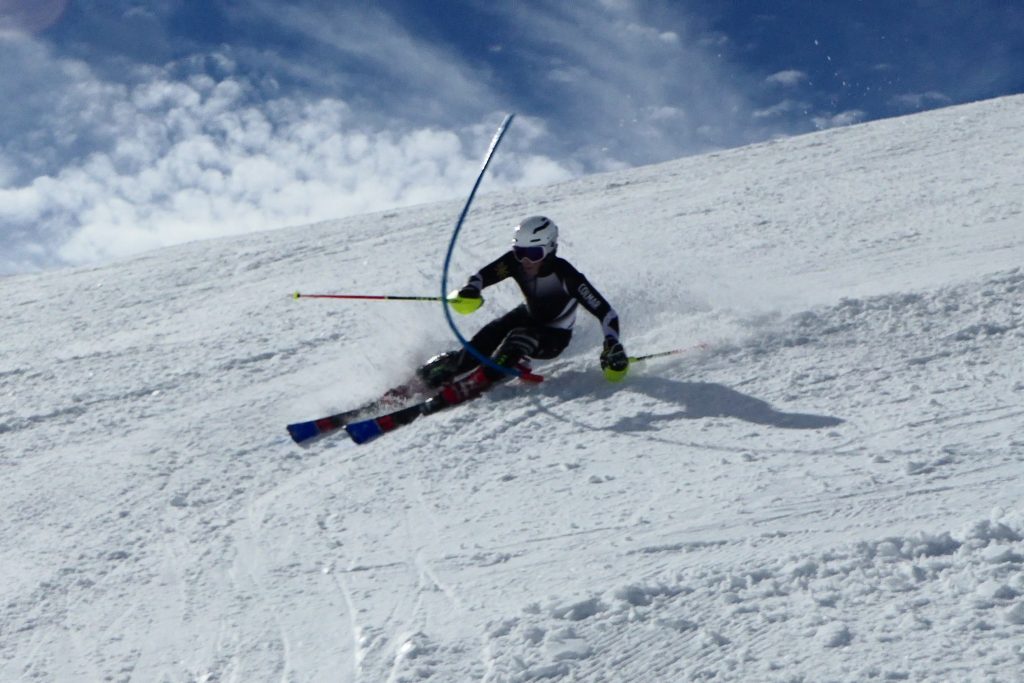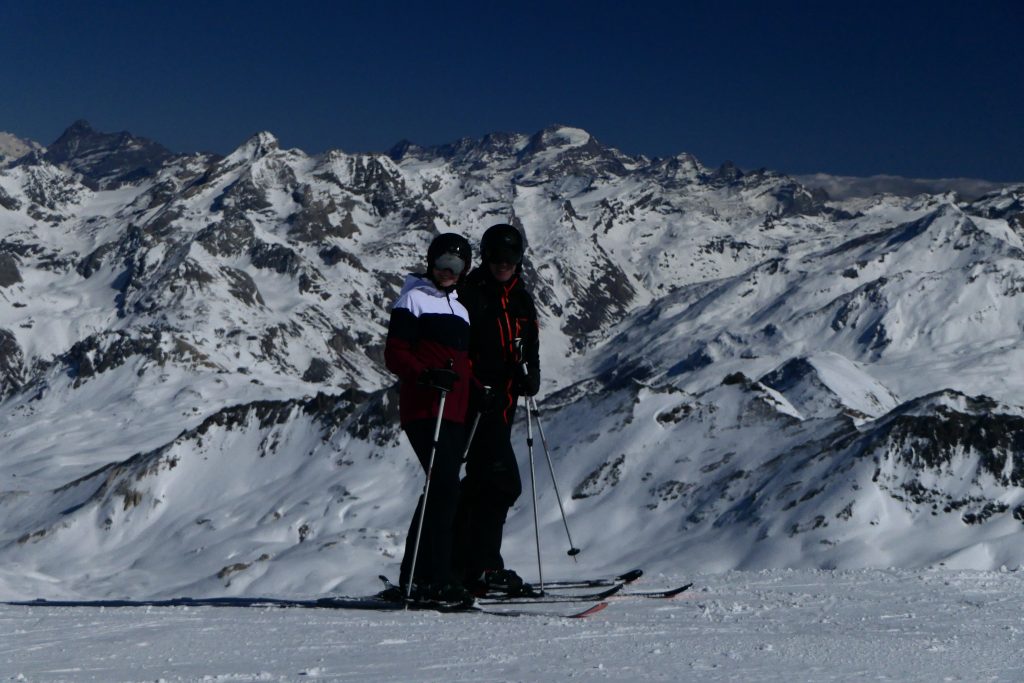Stopping the Stem
First thing we did was to use “early pressure” on the uphill edge of the uphill ski (outside edge of foot) extending the leg through the turn transition. Alex felt how there was more grip with the ski through the turn initiation and this stopped her stem (first video clip).
Adductors – Narrow Stance
The adductor muscles are used to narrow the stance and use the skis more as a unified platform – this being particularly useful when using “early pressure”!
Forward Pressure
The front of the ski is where the main turning power comes from so some attention was given to this – mainly standing on the balls of the feet and maintaining pressure on the fronts of the ski boots.
Angulation
Angulation was explained as a positioning of the outside hip in the turn being pulled backward away from the front rib cage. This solicits a reflex contraction of the lower abdominal postural muscles when there is an increase in pressure on the soles of the feet (lumbar protection). The hip is pulled backward the moment the leg takes over pressure during the turn initiation.
Brian found that tilting his pelvis slightly upward at the front made the reflex less effective – and this gives a clue to his general posture and lack of angulation. The back is too rounded and this extends to the arms and hand carriage. The upper body should be held straight – tilted only at the hip joints – opening up the chest. Accompanying this issue the rounding of the back is often causing a straightening up of the ankles and what appears to be a lack of pressure on the boot fronts.
Angulation is precisely what enables safe -very hard – pressure on the fronts of the boots and skis – hence the reason for flex DIN 130.

Pivot – Centre of Mass
Pivots were good – but when putting pivots into action with linked turns or on the bumps the solid pole plants disappeared!!! Alex needs to work on keeping the body inside the turn through the end of the pivot especially when using the “wrong” ski – this problem being coherent with the tendency to “rotate” the body. It’s the primary reason why we angulate!
Pole Touch
The pole touch is used in dynamic skiing where there is a froward motion of the skis across the hill (instead of fall line pivots). It’s just a touch with the tip of the downhill pole as the body falls into the new turn – sensory feedback only and not necessary at higher speeds.
Bumps
This is where a narrow stance, solid pole plant (on the bump), pivoting (outside edge of foot) in the fall line and good angulation all come together. We will be adding compression to this in future!


